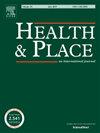Does geographic availability of alcohol influence drinking in adolescents? A systematic review of literature associations
IF 4.1
2区 医学
Q1 PUBLIC, ENVIRONMENTAL & OCCUPATIONAL HEALTH
引用次数: 0
Abstract
Background
The role of alcohol geographic availability in influencing adolescent drinking has been debated. However, clear literature consensus has not been reached.
Objective
To provide a systematic review of the associations between geographic availability of alcohol outlets measured through different methodologies and drinking outcomes in adolescents.
Methods
We conducted a systematic search (PubMed/SCOPUS/Web of Science) for articles exploring associations between alcohol availability and adolescent drinking before 2023. Original articles written in English that evaluated adolescent populations (10–19 years old), included at least one quantitative alcohol consumption outcome and its relationship with geographic availability of alcohol, and declared no conflicts of interest were selected for the review. A quality assessment of the selected articles was made using the Newcastle-Ottawa Scale and descriptive analyses were carried out to summarize results.
Results
Thirty-one articles were reviewed (19 cross-sectional and 12 longitudinal studies), which included a total of 507336 participants. Alcohol availability was positively related to drinking prevalence and risky patterns in 53.3% and 60.5% of associations, respectively. Individual-level covariates, the type of alcohol outlets measured and the different methodological approaches to measure outlet density were related to differences in the direction and magnitude of these associations.
Conclusion
Just over half of the studies in this review demonstrate a positive association between alcohol availability and adolescent alcohol consumption with no negative associations reported. The review highlights the mix of methodological approaches that are used, which made it difficult to conduct joint analyses. Additional research is needed to explore the appropriateness, effectiveness and reliability of these methods within various contexts.
酒精的地域供应是否会影响青少年饮酒?相关文献的系统回顾。
背景:酒精的地理可得性对青少年饮酒的影响一直存在争议。然而,文献尚未达成明确的共识:对通过不同方法测量的酒类销售点的地理可用性与青少年饮酒结果之间的关系进行系统综述:我们对 2023 年前探讨酒精供应与青少年饮酒之间关系的文章进行了系统检索(PubMed/SCOPUS/Web of Science)。我们选取了以青少年群体(10-19 岁)为评价对象、至少包含一项定量酒精消费结果及其与酒精地理可得性之间的关系、未声明利益冲突的英文原创文章进行综述。采用纽卡斯尔-渥太华量表对所选文章进行了质量评估,并对结果进行了描述性分析:结果:共审查了 31 篇文章(19 篇横断面研究和 12 篇纵向研究),其中包括 507336 名参与者。在53.3%和60.5%的关联中,酒精供应分别与饮酒率和风险模式呈正相关。个人层面的协变量、所测量的酒类销售点类型以及测量销售点密度的不同方法与这些关联的方向和程度差异有关:本综述中略多于半数的研究表明,酒精供应与青少年酒精消费之间存在正相关关系,没有负相关关系的报道。综述强调了所使用方法的多样性,这给联合分析带来了困难。需要开展更多的研究,以探讨这些方法在不同情况下的适当性、有效性和可靠性。
本文章由计算机程序翻译,如有差异,请以英文原文为准。
求助全文
约1分钟内获得全文
求助全文
来源期刊

Health & Place
PUBLIC, ENVIRONMENTAL & OCCUPATIONAL HEALTH-
CiteScore
7.70
自引率
6.20%
发文量
176
审稿时长
29 days
期刊介绍:
he journal is an interdisciplinary journal dedicated to the study of all aspects of health and health care in which place or location matters.
 求助内容:
求助内容: 应助结果提醒方式:
应助结果提醒方式:


